


Mission Statement
The Institute for Biodiversity and the Environment exists to inform and motivate the conservation, preservation, and restoration of biodiversity, and the environment upon which it depends, through research, education, and the dissemination of knowledge.
Give to the Institute
Your support of the Pacific Crest Trail Megatransect project or the Institute for Biodiversity and the Environment as a whole goes directly towards funding the conservation, preservation, and restoration of biodiversity through research, education, and the dissemination of knowledge. Thank you for your support.
Please select either the Institute of Biodiversity & Environment or the Pacific Crest Trail Biodiversity Megatransect in the Gift Designation dropdown on the giving form.
Vision Statement
We envision an interdisciplinary community of scientists and scholars who desire to foster unity and collaboration across boundaries of faith, both within and outside the Christian community, in order to study and to help protect biodiversity.
About the Institute
We are an interdisciplinary community composed primarily of Christ-motivated scientists and scholars who all share in the Institute’s vision and are committed to the practice of new creation (see Theological Framework below). What do we mean by a community composed “primarily” of Christ-motivated scientists and scholars? Although we define ourselves as Christ-motivated – as it is our faith in Christ that unifies and motivates us in our work – we also affirm the importance of partnerships with those who share our vision but who may not necessarily share, but respect, the beliefs of our faith. Thus, we will work across the boundaries of faith and seek out partnerships both within, and outside the Christian community.
We define biodiversity as all the ways living organisms interact with other living organisms and the nonliving environment at multiple levels throughout all of life; this includes the levels of the molecular, cellular, organismal, population, species, community, ecosystem and the entire biosphere. Biodiversity refers to the number of species in a particular area as well as…
-
the genetic diversity within and among populations.
-
the diversity of adaptations that have evolved within populations that have responded
to past environmental change.
-
the diversity and distinctiveness of species compositions and the interactions among ecological communities.
-
the diversity of ecological interactions (e.g., mutualisms, predation, competition, parasitisms, pathogens, etc.) among organisms, including the interactions of microbes, fungi, plants, and animals, including humans, with each other and with the nonliving environment.
-
the diversity of functions and services provided by ecosystems.
-
the diversity of interactions between distinct ecosystems across the broader landscape.
-
the diversity human interactions with the living and nonliving environment.
We believe that biodiversity is a priceless treasure that must be understood, conserved, preserved, and restored. Our main reasons for valuing biodiversity and the environment are as follows:
-
We value biodiversity because it provides direct benefits to humankind. Biodiversity enriches our lives, maintains our spiritual, mental, and physical health. In addition, as the foundation of our global economy, biodiversity provides economic benefits through recreational opportunities, food, medicine, and many other products that we consume.
-
We believe God values biodiversity. We value biodiversity, not solely because of the benefits that it provides to humankind, but also because God has placed value on the “good” creation (see Theological Framework). Therefore, biodiversity has intrinsic God-given value regardless of whether humanity places value on it.
-
We recognize that humankind is also part of and dependent upon the ecosystems in which we live. We must, therefore, conserve biodiversity for future generations as we consume resources for our present needs. We must also work to protect biodiversity where it presently receives minimal impact from humankind. We must restore biodiversity where it has been impacted adversely by humankind for the enjoyment of future generations.
-
We acknowledge that we are in a global biodiversity crisis and experiencing an unprecedented loss of biodiversity, including a loss of genetic diversity, species, and ecosystem function, due to environmental change from anthropogenic drivers, including human land use and climate change.
We will engage in impactful interdisciplinary environmental research and scholarship, across the sciences and humanities, addressing both theoretical and applied questions at the local, regional, and global scales.
We will foster interdisciplinary dialogue as a means of resolving environmental concerns that relate to the natural and social sciences and the humanities.
We will seek a broad understanding of how past and present processes, cultures, and institutions affect local, regional, and global environments.
We will implement both short-term studies that address relevant questions for conservation decision makers and long-term studies that monitor trends in biodiversity.
We seek to inform strategic decision-making and adaptive management in government agencies, private industry, environmental nonprofits, policy makers, and others who are responding to the biodiversity crisis.
We desire to train the next generation of problem solvers who leverage skills and techniques from a multitude of disciplines to generate practical solutions to the biodiversity crisis.
We seek to bridge coordination and communication gaps across administrative boundaries within and between government agencies, environmental nonprofits, private landowners and industries, and other stakeholders.
We seek to lead the Christian community to an understanding of the scientific, social and biblical perspectives framing environmental concerns and the biodiversity crisis.
According to the biblical story, caring for God’s good world is fundamental to our identity as followers of Jesus. At the heart of this story is the Creator’s commitment to establish his kingdom on earth—a place absent of evil; where all the creation can flourish, where human beings can become who they were made to be, and where God himself lives with his creation. The kingdom arrived “in the beginning” through God’s creative activity, was lost when humanity rebelled, returned through the death and resurrection of Jesus and the re-creating work of the Spirit, and will be fully revealed in the new creation. Thus the biblical story does not culminate with the destruction of God’s creation, but with its renewal. The full arrival of God’s kingdom includes the restoration of all the earth so that humanity can live with God and live out their identity as image bearers and caretakers of his good world (e.g., Isaiah 65:17; Romans 8:19-22; 2 Peter 3:13; Revelation 21-22). God’s promise to one day restore all creation should not lead us to abuse and misuse it, but to value and care for it.
In the time between the resurrection and return of Jesus, God intends for his people to be a preview of his renewed world—a foretaste (or foreshadowing) of the full arrival of his new-creation kingdom. We are thus the present witnesses of God’s new-creation kingdom and the evidence that the great cosmic renewal has begun. Therefore, as those who participate in and foreshadow God’s new creation, we are to live as people of the future in the present time by practicing new creation now. We believe that we can foreshadow the new creation by caring for God’s good creation and actively engaging in its preservation, conservation, and restoration in the present time. We, therefore, commit to practicing new creation by demonstrating and promoting respect, humility, self-restraint, openness, justice and love toward all aspects of God’s good creation.
This program consists of three research- and field-oriented courses within the Biodiversity Study Program that provide a rich undergraduate experience, emphasizing academic excellence and research exploration for academically gifted students.This program provides an additional 15 units of specialized study and scholarly research beyond the original degree requirements which allows graduates to have special recognition upon graduation.
For the additional 15 units that are required, choose from the following:
-
ESCI 442 Field Research in Ecology (5 units)
-
ESCI 497 Research Assistantship in the Environmental Science (up to 2 semesters at 5 units each).
-
BIOL 495 Molecular Methods (5 units)
Students taking these courses will participate directly in the Pacific Crest Trail (PCT) Megatransect research (see below). Students may choose to enroll separately in the field course on the PCT (ESCI 442 Field Research in Ecology, see course description below), or either of the other two courses (ESCI 497 Research Assistantship, BIOL 495 Molecular Methods) and students may apply these courses as upper division credit toward their degree at their respective institutions. Students may also choose to enroll in the complete Honors Program (15 additional semester units beyond the student’s original degree requirements). See below for course requirements for the Honors Program.
The field course on the PCT (ESCI 442) is open to both WJU and non-WJU students across majors (both science and non-science majors) of good academic standing and who have good observation skills, a desire for adventure, ability to work in a wilderness setting, and a passion for science (see application materials for students qualifications). The Honors Program is also open to WJU and non-WJU students across majors in natural sciences (e.g., environmental science, biology, etc.).
Apply to the Program
Please complete and submit the Honors Program Form.
Institute Projects
VISION FOR CLOVER VALLEY
- To protect and restore the biological diversity of Clover Valley
- To protect, in perpetuity, the cultural resources present in Clover Valley
- To provide experiential learning and research opportunities for Jessup students and faculty as well as nearby schools and colleges
- To provide educational and recreational opportunities for all those who live in, and who visit, the Rocklin community
Jessup University and its Institute for Biodiversity and the Environment (IBE) and Placer Land Trust (PLT) have partnered to pursue conservation of the majestic Clover Valley, one of the last remaining, intact sections of oak and riparian woodlands in western Placer County. Currently approved for 558 high-end single-family homes with a roadway across the valley floor, this ~488 acre acquisition will instead preserve the slope and valley floor landscape replete with biological and cultural resources and provide a rare recreational amenity for the City of Rocklin and beyond.
To learn more, please visit jessup.edu/clovervalley.
THE PACIFC CREST TRAIL BIODIVERSITY MEGATRANSECT – A BIODIVERSITY “BAROMETER”
Objectives
-
Track the population trends and distributions of hundreds of wildlife species, and their habitats, along the Pacific Crest National Scenic Trail (PCT)
-
Inform conservation decisions that protect biodiversity in the remote mountain regions of the Pacific Crest Trail
Overview
The Pacific Crest Trail (PCT) Biodiversity Megatransect is an ambitious ecological study that involves undergraduate researchers and faculty in Jesusp’s Environmental Science program. Surveys for hundreds of vertebrate species using a variety of novel, noninvasive techniques are conducted continuously as observers hike the trail along the PCT. The PCT is a hiking trail that runs from the Mexican border to the Canadian border along the mountain ranges of California, Oregon, and Washington (2,650 miles long). Learn more.
Capital Public Radio Interviews on PCT Biodiversity Megatransect:
http://www.capradio.org/news/insight/2019/01/15/marking-climate-change-one-species-at-a-time/
http://www.capradio.org/news/insight/2018/02/06/insight-020618b/
LANDFILL ENVIRONMENTAL CHEMISTRY PROJECT
Objectives
- Investigate the biology and chemistry of landfill leachate.
- Investigate the composition and production of gas emissions from a commercial urban landfill.
- Investigate the efficiency and efficacy of several technologies in the conversion of green waste
to compost.
Overview
Municipal waste is never ending product of urban cities with the average individual in the US producing about 4.4lbs per day. Given the continued decadal urban growth, the appropriate recycled and landfilling of this material will likely present a great management challenge for city utilities charged with processing it. Although landfilling of waste is well-established, best management procedures are still evolving to minimize the carbon footprint of this remediation technique.
BIODIVERSITY DATABASE
The database contains the project data that are collected annually. At this time, the kinds of data include avian, herpetofauna, aquatic vertebrate, and audio recordings from avian surveys. It is our goal to include student participation (particularly those who are computer science majors) in the design, construction, and maintenance of the database and web-based applications/tools.
PACIFIC ENVIRONMENTAL HISTORY AND CULTURE
Objectives
- Examine historical archives for establishing more accurate baseline data relating to sea otter recovery and decline throughout the Eastern Pacific
- Research the environmental histories and cultures of California and Pacific Northwest communities
Overview
The Pacific: Historical and Environmental Frontiers. Faculty and students across disciplines are invited to contribute to this ongoing project that charts the Pacific Ocean’s faunal pasts through a synthesis of archival historical research and digital methodologies. Emphasis is also given to understanding the ways that local cultures have helped to shape environments and ecologies across time with particular emphasis on California and the Pacific Northwest.
LANDFILL ENVIRONMENTAL CHEMISTRY PROJECT
Objectives
- Track the population trends and distributions of hundreds of wildlife species, and their habitats, along the Pacific Crest National Scenic Trail (PCT)
- Inform conservation decisions that protect biodiversity in the remote mountain regions of the Pacific Crest Trail
Overview
The Pacific Crest Trail Biodiversity Megatransect – A Biodiversity “Barometer”
The Pacific Crest Trail (PCT) Biodiversity Megatransect is an ambitious ecological study that involves undergraduate researchers and faculty in WJU’s Environmental Science program. Surveys for hundreds of vertebrate species using a variety of novel, noninvasive techniques are conducted continuously as observers hike the trail along the PCT. The PCT is a hiking trail that runs from the Mexican border to the Canadian border along the mountain ranges of California, Oregon, and Washington (2,650 miles long).
Capital Public Radio Interviews on PCT Biodiversity Megatransect:
http://www.capradio.org/news/insight/2019/01/15/marking-climate-change-one-species-at-a-time/
http://www.capradio.org/news/insight/2018/02/06/insight-020618b/
THE PRESENT PRACTICE OF NEW CREATION
Objectives
Organize conferences for churches to learn about the biblical perspective on our current environmental crises and inspire Christians to value caring for God’s good world. Publish a book that explains the biblical story of God’s new-creation kingdom and explores its present-day implications for followers of Jesus.
PLACER COUNTY CONSERVATION PROGRAM COLLABORATION
The Placer County Conservation Program (PCCP) is a local, county-based conservation initiative. The purpose of PCCP is to streamline the permitting process and facilitate economic growth while also conserving natural resources throughout Placer County. It will allow a single government entity, Placer County, to issue state and federal permits for local development within the county. The PCCP acts as both a Habitat Conservation Plan under the Federal Endangered Species Act and a Natural Community Conservation Plan under the California Natural Community Conservation Planning Act.
William Jessup University and the Institute for Biodiversity and the Environment (IBE) have signed an MOU with Placer County to facilitate collaboration with the PCCP. IBE will assist with the following program needs as part of our research agenda in order to help the PCCP obtain its conservation goals, including conservation-related research, habitat restoration, wildlife population monitoring, the management and storage of biodiversity data, and the collection of baseline wildlife and habitat data for the PCCP. Specific activities may include eDNA surveys and lab analysis (PCR), GIS analysis, soil/water/air sampling, aquatic surveys, wildlife habitat surveys, and computer data storage/database development and management.
RACCOON AND DOTY CREEK SALMONID EMIGRATION AND DISTRIBUTION STUDY
Goal
- Determine the timing of emigration and distribution of anadromous salmonids in the Raccoon and Doty Creek watersheds.
Objectives
- Characterize the occurrence and distribution of juvenile anadromous salmonids (i.e., fall-run Chinook salmon and Central Valley steelhead) emigrating from the upper watershed during the period from late March through June using environmental DNA techniques
- Evaluate the presence of juvenile steelhead in the watershed from fish captured in fyke or hoop nets
- Characterize the temperature regime in the lower watershed during the anadromous
Project Background
This project provides undergraduates opportunities to come alongside IBE’s Research Associates in ongoing research projects through William Jessup University’s Science Honors Program
The Coon Creek Watershed Assessment conducted in 2017 identified a lack of information regarding the timing of juvenile salmonid emigration as a general concern and of great value to informing restoration opportunities.
It is our goal to establish this project as an annually occurring monitoring program. This study will provide information regarding the overall success of restoration projects within the watershed over time, if done annually.
A STUDY OF THE USE OF ARTIFICIAL NESTS BY BURROWING OWLS
Purpose
To test the feasibility of creating artificial burrows and their use by Burrowing Owls on the grassland preserves throughout western Placer County.
Project
The project will build several artificial burrows on Placer Land Trust (PLT) lands in west Placer County and monitor the success of both the old burrows and new ones to determine the feasibility of applying this more widely.
Project Background
Burrowing Owls are in steep decline throughout their range and have been extirpated from much of their range in California and nearly extirpated from Placer County.
Although many owls have had limited breeding success with the use of artificial burrows, PLT has had good results using artificial burrows on one of their vernal pool grasslands preserved north of Lincoln. These burrows are being used both by wintering owls and have produced a number of successful broods over the past few years.
Of greatest interest to this study is PLT’s success with above-ground burrows. This is especially important since much of the lands that will be preserved in west Placer are vernal pool grasslands and the conditions that make for good vernal pools (hard claypan to retain water) cause underground burrows to flood. These above-ground structures can be used in wet as well as dry years.
Program Chair

Michael McGrann, Ph.D.,
Chair of IBE and Honors Program Chair
As a wildlife ecologist, Dr. McGrann studies patterns in species diversity, abundances, and distributions and the underlying environmental drivers of these patterns. He is particularly interested in studying remote montane ecosystems with the goal in mind to inform conservation decisions responding to climate change and human land-use change. He is exploring the use of novel, noninvasive wildlife survey techniques, such as environmental DNA and automated recording devices, that are applicable in wilderness areas and across large regions. For over a decade, Dr. McGrann has led an ambitious, large-scale biodiversity monitoring program where wildlife surveys are conducted along the Pacific Crest Trail – the Pacific Crest Trail Biodiversity Megatransect.
Advisory Board Members
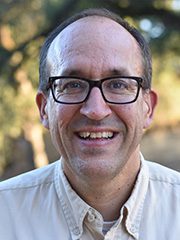
Bruce Springsteen,
Placer County Air Pollution Control District
Mr. Springsteen serves as the permitting and compliance manager for the Placer County Air Pollution Control District. He has over 30 years of experience in air pollution formation, control, monitoring, and sampling. He has led projects evaluating the air quality impacts of the use of forest, agricultural, and urban biomass wastes for energy, biochar, wood products, and compost as an alternative to landfilling and open pile burning. He is studying the greenhouse gas benefits of forest fuel-reduction treatment projects that reduce the size and intensity of wildfire. Mr. Springsteen has an M.S. in Mechanical Engineering from the University of California, Davis.
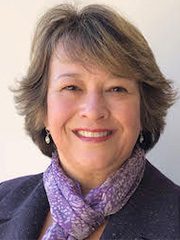
Elaine Prins
Environmental Remote Sensing and Atmospheric Scientist
Ms. Prins has been involved in the fields of air quality monitoring and remote sensing applications of NASA and NOAA environmental satellites. Her experience includes satellite remote sensing research and product development, technology transfer, operational implementation, and federal grant/contract program management (NASA, NOAA, DoD). For nearly 20 years Ms. Prins was the P.I. of the global geostationary fire detection and monitoring effort as part of the NOAA/NESDIS Advanced Satellite Products Team and the UW-Madison Cooperative Institute for Meteorological Satellite Studies. She currently serves as the Deputy Project Manager of the NASA sponsored Joint Polar Satellite System (JPSS) VIIRS Atmosphere Science Investigator-led Processing System (SIPS) at UW-Madison.Ms. Prins has participated in international collaborations and working groups assessing diverse global user needs and maximizing the utilization of global geostationary and polar-orbiting satellite derived products for hazards monitoring, climate modeling, land-use land-cover change studies, and air quality model data assimilation. She is particularly interested in exploring interdisciplinary applications of satellite derived products. She received her B.S. (U.C. Davis) and M.S. (UW-Madison) in Atmospheric Science.
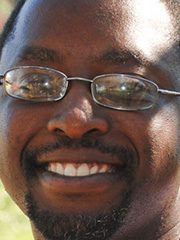
Fungai Mukome, Ph.D.
Jessup Faculty, Environmental Chemistry
Dr. Mukome’s research interests are in soil environmental chemistry and include soil amendments; investigating soil nutrient cycling; and fate and transport of contaminants in the environment. He has extensive expertise in environmental materials characterization utilizing analytical instruments; in soil amendments such as biochar, biosolids, organic fertilizers and compost; and in investigating the interactions and stabilization of these amendments in soil and their effect on nutrient cycling and greenhouse gas emissions.
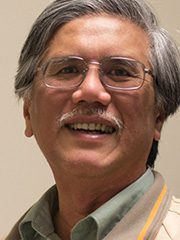
Joseph Liauw, Ph.D.
Computer Science
The computing component of the biodiversity projects mainly centers around the areas of data entry, storage, maintenance, and dissemination. Web-based applications and tools make it possible for authorized project participants to deliver and/or access the data at any time, and from anywhere they may be located. Public-facing web pages allow those interested to view contents that result from the project activities.
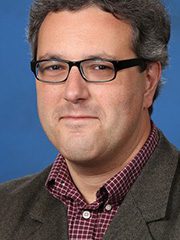
Richard Ravalli, Ph.D.
Jessup Faculty, History Dept.
Dr. Ravalli is a historian interested in the environmental and political dynamics of the maritime fur trade in the Pacific Ocean since the early modern era. His work examines various sources of data including eighteenth and nineteenth century pelt cargos in order to better estimate historic sea otter population abundance and regional declines. Dr. Ravalli has conducted research on contemporary cultural issues associated with sea otter conservation. His book Sea Otters: A History (University of Nebraska Press) is forthcoming in fall of 2018. He has also researched the history of the American West and animal history and folklore. His work has appeared in Pacific Northwest Quarterly, Asia Pacific Perspectives, and Journal of American Culture.

Sumathi (Sam) Sankaran-Walters, Ph.D.,
UC Davis School of Nursing and School of Medicine
As a molecular biologist, microbiologist and immunologist, Dr. Sankarans studies a wide variety of systems ranging from the human immune system in aging to the use of molecular biology in species identification in the environment. She is particularly interested in studying the relationships between frog and fish species in streams and applying innovative technologies to the process. Dr. Sankaran has applied real-time PCR technology to the identification of frog and trout species in eDNA samples collected in the PCT. She plans to continue studying these samples to identify pathogens in eDNA and their relation to the distribution of frog and trout species. These molecular biology tools can be used in several proposed studies of the IBE.
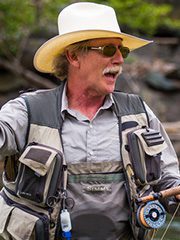
The Hon. Robert Weygandt,
Supervisor, Placer County District 2
Robert M. Weygandt, a member of the Placer County Board of Supervisors since 1995, lives in the same foothills ranch in rural Lincoln where he grew up. He represents the western portion of the county, including Lincoln, Sheridan and the northern portions of Rocklin. He has lived in Placer County for over 50 years and is currently serving his sixth four-year term.
After graduating from Lincoln High School, Robert earned bachelor’s and master’s degrees in finance and management from the University of Southern California (go Trojans!). From 1979 to 2004, he was vice president, chief financial officer, and part-owner of WECO Aerospace Systems, an aircraft repair facility based in Lincoln. His other past experience includes serving as a county planning commissioner, member of the county economic development board and community college instructor.
Today, Robert is avidly involved in Placer Legacy and the Placer County Conservation Program (PCCP)—programs designed to balance responsible development with the protection of land, water, and open space within the county. Placer Legacy was honored with the Governor’s Award for Environmental and Economic Leadership in 2002. Robert is also an avid outdoorsman who admits to being a fanatic fly fisherman.

The Reverend Dr. Portia Hopkins, writer, researcher, and priest in the Episcopal Church
Portia Hopkins served for twenty-five years on the faculty of William Jessup University. During that time, she held a variety of administrative positions, including Chair of Faculty Development and founding Chair of the English Department, as well as teaching in English literature, Composition, Education, and Interdisciplinary Studies. Her current research interests include pedagogy for transformative learning, spiritual development and formation, and sacred space as postmodern mission. She is currently serving as a priest in the Episcopal Diocese of Northern California.
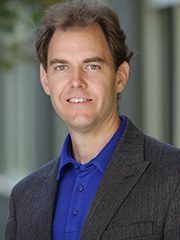
Bradley Wagner, Ph.D.
Jessup Faculty, Mathematics
While Dr. Wagner’s research background is in pure mathematics, he is pivoting towards applied mathematics to offer support to the research interests of the IBE. Currently, he is studying statistics and the R programming language. In the future, he will seek to support the various research projects of The Institute by assisting with quantitative analysis of data.

Bruce McLaughlin, J.D.
Cameron-Daniel, P.C.
Mr. McLaughlin’s law firm, Cameron-Daniel, practices in the nexus of the interdependent critical infrastructures of energy, water, agriculture, and government. The water and power infrastructures provide measurable value to all Californians, including flood control, municipal water supply, agricultural water supply, other ecosystem services, and recreation. It is likely true that without these extensive infrastructures, California could not have built or currently sustain: (a) many of the cities now in existence that serve as important centers of technology, critical manufacturing and government; or (b) the agriculturally productive Central Valley. Yet, it is also true that this infrastructure has significantly changed many aquatic and terrestrial ecosystems from historical norms. The water, power, and agriculture infrastructure systems, as well as healthy ecosystems and environments, are key to California’s economic and social well-being. Achieving the integrated sustainability of both built and natural infrastructure systems presents many challenges and requires systems that are robust, reliable, cost-effective and resilient. He believes there is a path forward to a sustainable future with “both/and” the built infrastructure and healthy ecosystems through the continuing stewardship of myriad stakeholders. Accordingly, he aspires to work with IBE to explore this issue in the legal, scientific, technical and theological arenas.
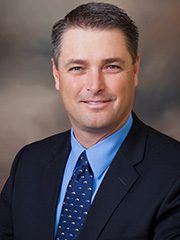
Erik White
Placer County Air Pollution Control District
Erik White currently serves as the Air Pollution Control Officer (APCO) of the Placer County Air Pollution Control District (District), assuming the role in 2015. In this capacity, Erik oversees a $5 million budget and a staff of 17 full-time air quality and administrative professionals that oversee stationary source permit engineering, enforcement and compliance activities, forest resiliency and biomass initiatives, air quality and land use planning, air monitoring activities, and a $2 million Clean Air Grant program. It is Erik’s job to ensure that these activities are consistent with state and federal statutes and regulations and that the activities of the District continue to support regional needs to ensure attainment of health-based federal and state ambient air quality standards.
Prior to his appointment as District APCO, Erik spent 22 years with the California Air Resources Board (ARB). During his tenure at ARB, Erik worked in several high priority program areas, including the development and implementation of: California’s reformulated fuels programs; many mobile source diesel risk reduction programs, including the Statewide Truck and Bus and In-Use Off-Road Vehicle Regulations; over $300 million in criteria and greenhouse gas incentive programs, including the Carl Moyer Program, the Air Quality Improvement Program, and the Low-Carbon Transportation Program; and new heavy-duty engine and vehicle standards. Erik left the ARB in 2015 as Chief of the Mobile Source Control Division. In that capacity, Erik oversaw an annual operating budget of over $20 million and a staff of over 160 engineers, scientists and administrative staff in both Sacramento and southern California.
Erik has a B.S. in Aerospace Engineering from the University of California, Los Angeles.

John Rabe,
Former Elementary School Administrator
Mr. Rabe dedicated his professional career to working with children in the public school system. He taught in a constructivist manner and found that to be a superior learning environment for young exploring minds. Later Mr. Rabe became a school principal and found great satisfaction bringing schools to their peak of excellence. Three of his schools became California Distinguished schools and one was named as a National Distinguished school. Mr. Rabe views himself as an entrepreneur and change agent. At the same time that leadership is critical to change he recognized that a strong collaborative group of professionals and parents would ultimately become the driving force for positive change.
Mr. Rabe retired after 40 years of a thrilling career. He is proud of having been recognized for excellence in education by the United States Department of Education in 1987.
Mr. Rabe decided upon retirement to involve himself in foundations that benefit mankind and the environment. He has been the president of the San Juan Foundation, an active member of SARSAS (Save Auburn Ravine Salmon and Steelhead), FAR (Friends of Auburn Ravine), a board member on a medical research board with Dignity Health for eight years and now a member of the IBE advisory board.
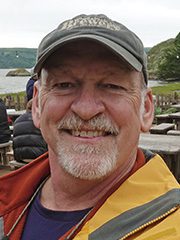
Loren Clark
Conservation Planner, Salix Consulting
Loren Clark is a conservation planner with Salix Consulting, Inc in Auburn California. Professionally, Loren provides support to long-range planning initiatives with an emphasis on programs that seek to balance economic development activities with natural resource conservation. Loren was employed by Placer County for 30+ years where he worked on current and advance planning projects including the Placer County General Plan, Placer Legacy Open Space and Agricultural Conservation Program and the Placer County Conservation Program. Loren continues to be personally involved in land conservation by serving on the Board of Directors for the Wildlife Heritage Foundation Board and is the Co-Chair for the Placer Land Trust’s Community Council. Loren enjoys travel, photography, woodworking, fishing, cooking, and time with the family including his wife Debbie and his daughters Allison, Erin and Morgan.
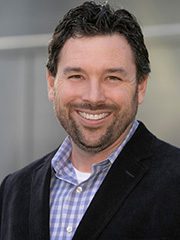
Matthew Godshall, Ph.D.,
Jessup Faculty, Biblical Studies
Dr. Godshall is passionate about helping students and local churches understand and live within the biblical story of God’s new-creation kingdom. He believes this story applies to all aspects of our lives but is particularly concerned with helping followers of Jesus discover the biblical framework for caring for God’s good world in the present time as they long for the arrival of the new creation. Currently, Dr. Godshall’s environmental research interests include teaching an Environmental Ethics course, publishing a book on the present practice of “new creation,” and engaging the Christian community in conversation on the role of Christians in the biodiversity crisis and environmental issues.
Research Associates

Jason Peters
Jason Peters is currently a graduate student at Sacramento State who is pursuing a M.S. in Biological Sciences with a concentration in Ecology, Evolution, and Conservation. Jason’s thesis research focuses on the utilization of environmental DNA (eDNA) survey methods for determining distribution and assessing potential spawning barriers for Chinook salmon and Steelhead, two anadromous salmonids, in the Raccoon Creek watershed located in Placer County, Ca. Jason’s scientific pursuits have stemmed from his love for experiencing and witnessing the “awe” of nature and biodiversity, and a desire to see this biodiversity flourish. Jason’s professional background is in the field of environmental consulting where he works as a wildlife biologist (primarily working with aquatic and semi-aquatic species) and regulatory project manager.








